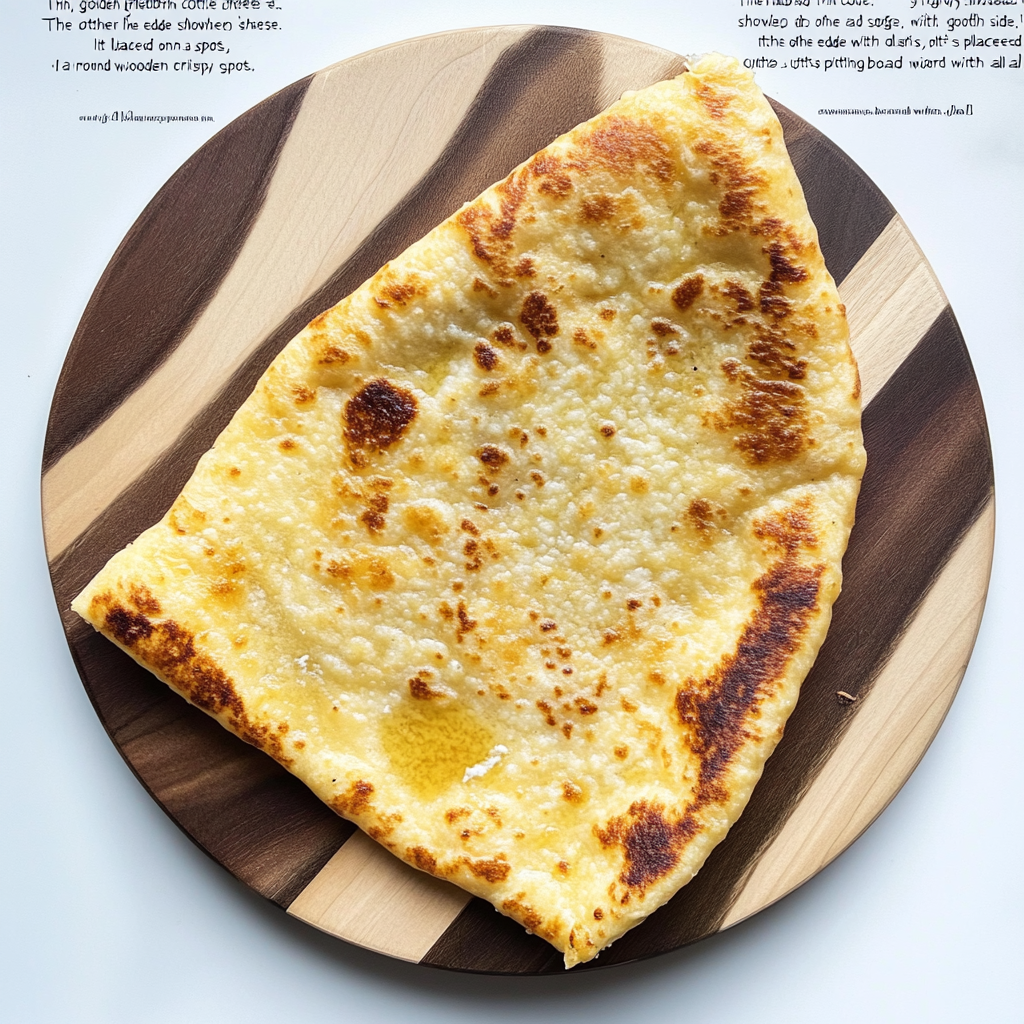
Exclusive Recipe: Crispy Cottage Cheese Flatbread
Makes: 2-3 flatbreads
Preparation Time: 35-40 minutes
Introduction
This cottage cheese flatbread brings a fresh and inventive twist to traditional flatbreads, balancing a crisp crust with a tender, cheesy center. With its high protein content, this versatile recipe can serve as a delicious snack, side dish, or meal base. We include detailed steps and tips to guarantee perfect results every time, so you’ll be enjoying your cottage cheese flatbread in no time.
Why Cottage Cheese?
Using cottage cheese in this flatbread is essential for maintaining a soft, moist texture while also adding a hint of tanginess and enhancing its protein content. Instead of relying on yeast, which typically raises the dough, this recipe opts for baking powder to provide a light, airy texture. Therefore, preparation becomes faster and simpler, ideal for when you want a quick yet satisfying cottage cheese flatbread.
Ideal Ingredients for a Perfect Cottage Cheese Flatbread
- 1 cup (240 g) cottage cheese: Choose smooth cottage cheese for a creamier result. If you use a chunky version, consider blending it to achieve a consistent texture.
- 1 large egg: This acts as a binder, helping the ingredients hold together while adding richness.
- 1/4 cup (30 g) all-purpose flour: Provides the necessary structure. You can substitute it with whole wheat flour if you prefer a denser, heartier bite.
- 1/4 cup (30 ml) olive oil, divided: Used both in the batter and for brushing, it adds a rich, Mediterranean flavor while ensuring a crispy surface.
- 1/4 tsp baking powder: Offers a light lift, making the flatbread fluffier without needing yeast.
- 1/4 tsp garlic powder (optional): This adds depth to the flavor, making the flatbread more savory.
- 1/4 tsp dried oregano or Italian herbs: Adds a fragrant, herbal element to the dish.
- 1/4 tsp salt: Balances the flavors and enhances the overall taste.
- 1/4 tsp black pepper: Adds a mild heat, balancing the creaminess of the cheese.
Step-by-Step Instructions for Crispy Cottage Cheese Flatbread
1. Begin by Preheating the Oven and Preparing the Baking Surface
Set your oven to 425°F (220°C) to achieve a crispy crust for your cottage cheese flatbread. Line a baking tray with parchment paper to avoid sticking. For added crunch, apply a light layer of olive oil on top.
2. Blend the Wet Ingredients Thoroughly
Place 1 cup of cottage cheese, 1 large egg, and 2 tablespoons of olive oil in a blender or food processor. Blend until smooth and homogeneous, ensuring spreadability and a consistent texture once baked.
3. Prepare the Dry Ingredients Separately
In a large mixing bowl, add 1/4 cup of flour, 1/4 tsp baking powder, 1/4 tsp garlic powder (if using), 1/4 tsp oregano, 1/4 tsp salt, and 1/4 tsp black pepper. Mix with a whisk to ensure even distribution of the baking powder, so your flatbread rises uniformly.
4. Integrate the Wet and Dry Ingredients Thoroughly
Add the blended mixture to the bowl containing the dry ingredients. Gently fold them together with a spatula until fully integrated. The batter should be thick but spreadable. If it feels too stiff, add a splash of milk or water to loosen it slightly.
5. Shape and Spread the Flatbreads
Using a spoon, transfer portions of the batter onto the baking sheet, splitting it into 2-3 sections as preferred. Flatten each section to about 1/8 inch (3 mm) thickness for an even layer.
6. Add Olive Oil for Enhanced Crispiness
Brush the tops of the flatbreads with the remaining olive oil. This final step helps achieve a beautiful golden-brown crust during baking, making your cottage cheese flatbread irresistibly crispy.
7. Bake to Perfection
Place the baking sheet in the preheated oven. Bake for 12 to 15 minutes, or until the edges are golden brown and the top is firm to the touch. For a darker crust, leave the flatbreads in for an additional 2–3 minutes, monitoring closely to avoid overbrowning.
8. Let Cool and Serve Warm
Remove the flatbreads from the oven and transfer them to a wire rack. Let them cool for a few minutes to maintain their crispiness. Serve warm with your favorite toppings, such as fresh herbs, dips, or cheese spreads. Now, your cottage cheese flatbread is ready to enjoy!
Tips for Customizing Your Cottage Cheese Flatbread
- Herb-Infused: Add a handful of chopped fresh herbs, such as parsley or chives, to the batter for a burst of flavor.
- Cheese Upgrade: Mix in a small amount of grated parmesan or cheddar to make the flatbread cheesier.
- Spicy Version: Add a dash of cayenne pepper or sprinkle chili flakes into the batter for a spicy kick.
Nutritional Breakdown (per flatbread)
- Calories: Approximately 180-200
- Protein: 10-12g
- Carbohydrates: 15-18g
- Fats: 8-10g
The estimated nutritional values may change based on the selection of ingredients.
How to Store and Reheat Cottage Cheese Flatbread
- Storage: Once cooled, place the flatbreads in an airtight container and refrigerate for up to 3 days to keep them fresh.
- Reheating: To enjoy again, warm in an oven preheated to 400°F (200°C) for 5-7 minutes or reheat on the stovetop over medium heat.
Delicious Ways to Serve Cottage Cheese Flatbread
- Mediterranean Delight: Pair with olives, feta cheese, cherry tomatoes, and a drizzle of extra virgin olive oil.
- Breakfast Option: Top with scrambled eggs, avocado slices, and a sprinkle of herbs for a hearty start to your day.
- Quick Pizza: Spread tomato sauce over the flatbread, add shredded mozzarella, and broil for a couple of minutes until melted.
Conclusion
This cottage cheese flatbread is not just a recipe—it’s a versatile canvas for creativity. With a crispy texture and rich flavor, it can be a part of any meal. The simplicity of its preparation makes it a go-to option for both novice and experienced cooks looking to add a new twist to their bread repertoire.

I cant have flour. What can I use instead? I’m T2 diabetic.
For a T2 diabetic-friendly option, you can substitute the flour with almond flour or coconut flour. Both are low in carbohydrates and have a lower glycemic index, which helps manage blood sugar levels. If using almond flour, keep in mind that you might need to adjust the liquid content slightly as it absorbs moisture differently. Let me know if you need more details!